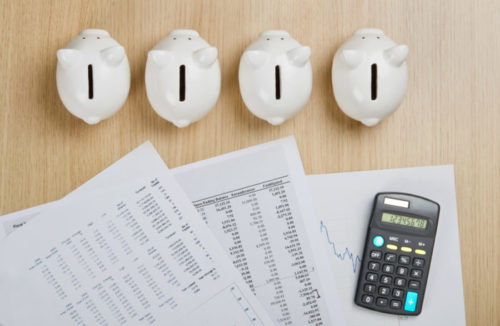Some stocks do more than gain value — they also pay you a bonus for owning the shares. The bonus is known as a stock dividend and companies such as Apple, AT&T, Johnson & Johnson, Chevron, and Verizon pay them. Some investors choose to take the dividend and buy more stock in the company. Known as a dividend reinvestment plan (DRIP), this is a good way to grow your investment portfolio and increase your dividend income. Here’s a closer look at how the process works.
Table of Contents
How DRIPs Work
DRIPs take the money you earn from a dividend payout and roll it back in to automatically buy more shares of the company. There are a couple of ways to enroll in a DRIP. You could find the transfer agent or investor relations department for a company you’re interested in investing in, such as AT&T or Johnson & Johnson. Not all companies provide a reinvestment plan. If you find that the company pays dividends but doesn’t offer a DRIP, you could reinvest your dividends through a broker.
Some brokers may charge you a commission each time you reinvest. Many larger trading platforms don’t, so do your research before you get started. Enrolling is as simple as choosing whether you want to reinvest 100% of your dividends or a portion of the funds.
If you have to choose between a direct investment with the company and a reinvestment plan through a broker, a direct investment has more advantages. Once you’re enrolled, your dividend income will automatically be invested in new shares. Signing up for a DRIP directly through the company you invested in will save you money. You won’t get charged any commissions or fees for your reinvestments. You may even get a discounted price when you buy new company shares.
Keep in mind that the amount you reinvest may not be enough to buy a whole share. For example, if your dividend payout is $35 and the stock’s trading price per share is $70, your reinvestment will buy you half a share. Owning a fractional amount, such as 10-and-a-half shares or five and a third, is possible when you reinvest directly through the company. But if you’ve signed up for DRIP through a broker, some may not allow you to invest in fractional shares. They’ll buy whole shares on your behalf and leave the remaining amount of money in your account.
Examples of DRIP Investing
If you’re still wondering why DRIP investing is beneficial, consider the following scenario. Say you’re enrolled in a DRIP through Company X. The stock is trading at $40 per share and you own 1,000 shares. Company X’s dividend is $0.27 per quarter and they pay you a total of $270. The company gives you a 10% discount when you purchase more stock, which means each share will cost you $36 instead of $40.
Your $270 dividend buys you 7.5 new shares — you now own 1007.5 shares worth $40,300. Your dividend reinvestment of $270 just earned you an extra $30. Now that you have more shares, your next dividend payment in three months will be $272.03. Imagine what compounding reinvestment and a growing stock value could do for your investment portfolio in just a few years.
Advantages of DRIP Investing
Here’s an overview of why you should consider reinvesting your dividends:
- Dividends go towards growing your net worth instead of covering miscellaneous purchases and bills;
- Your dividend income is automatically invested so you won’t forget;
- Compounding growth adds up fast;
- In most cases, DRIP is a commission-free way to buy more shares;
- You may get a discounted rate when you buy new company stock;
- The more shares you own, the more you’re worth if the stock value grows.
Disadvantages of DRIP Investing
There are some drawbacks you should consider before you sign up for a DRIP. They include:
- DRIPs require long-term investment;
- You may have too much portfolio allocation in a particular stock or stocks in general;
- You may not want to buy the stock automatically if you believe it’s overpriced;
- Dividends are taxable — reinvesting the income leaves you with no funds to cover the tax liability.
Who Could Benefit From a DRIP
A DRIP needs time to work. Investors looking for a fast or short-term investment plan to grow their money will be disappointed. DRIPs may be best for younger investors planning for retirement with plenty of time before they need access to their investments. Individuals with stable alternative income who don’t need the dividends to pay bills or expenses could also benefit most from a DRIP.
Choosing a DRIP
It’s important to do your research ahead of time before you commit to a dividend reinvestment plan. Evaluate the best DRIP stocks and their dividend histories. S&P’s Dividend Aristocrats consists of companies that have paid and increased dividends for the last 25 years. Look to the fund for ideas on which companies to choose.
If you’re reinvesting through a broker, take a close look at what fees and commissions the broker will charge you (if any) for reinvesting your dividends into new shares. Even the smallest commission eats into your compounding power. There are plenty of no-commission investment platforms and brokerages as alternatives.
Investing directly through the company you’re interested in may be your best bet. You won’t have to deal with any reinvestment commissions and may even qualify for a discount on new share purchases.
Image Source: https://depositphotos.com/





